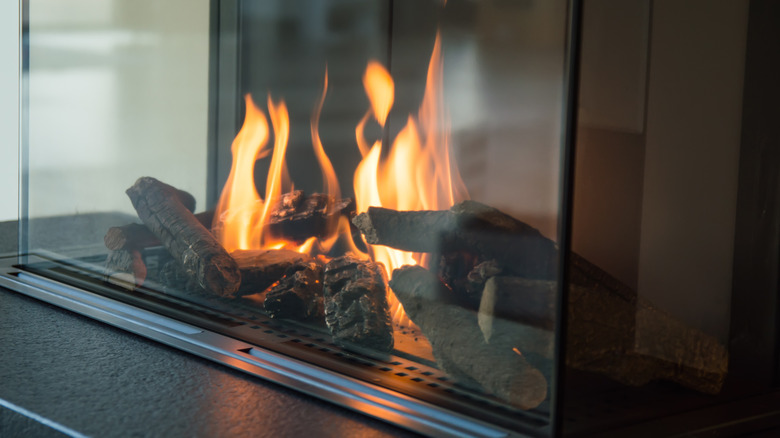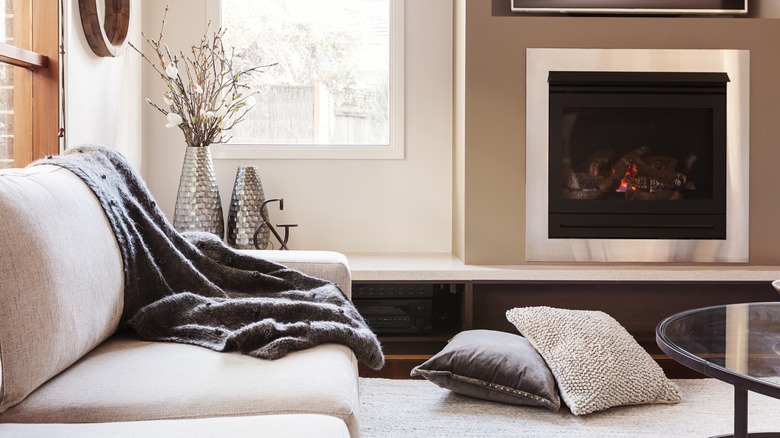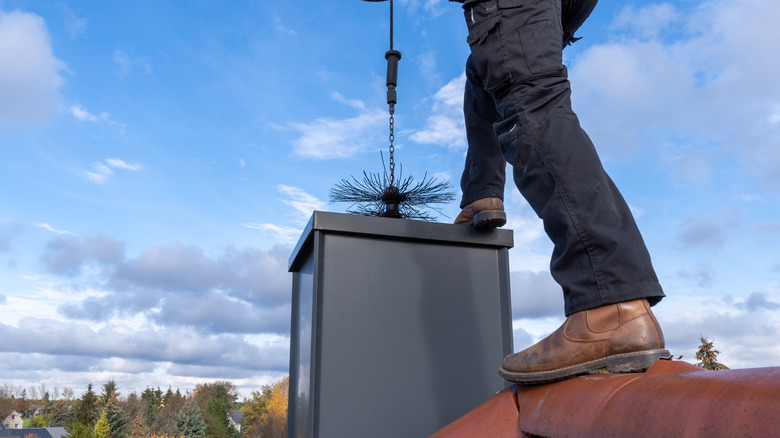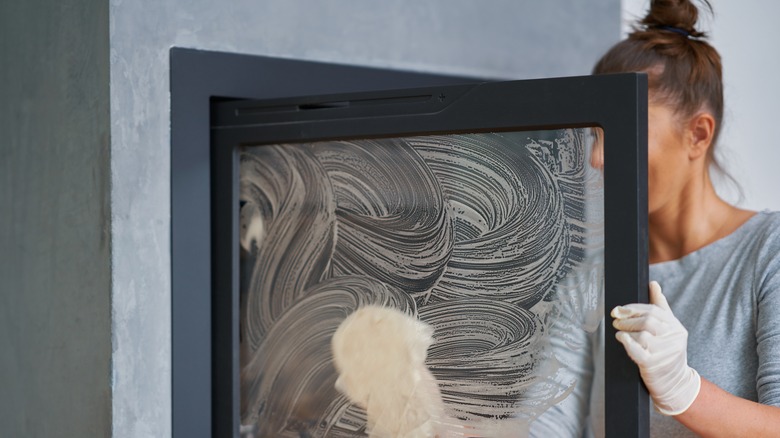5 Tips For Caring For Your Gas Fireplace
Compared to conventional wood burning fireplaces, gas fireplaces are appreciated for being incredibly convenient for homeowners. Not only are they easier to ignite and adjust, gas fireplaces require less frequent cleaning because they produce no ash and very little mess. However, they still represent a hefty investment for most people, so it's important to care for and maintain your unit. In fact, if you fail to properly care for your gas fireplace, you can expect to deal with costly repairs and time-consuming cleaning jobs before long, warns Vertical Chimney Care.
Although gas fireplaces require little to no daily attention, you'll still want to ensure yours is clean and in working order. It's also a good idea to have your fireplace inspected by a professional every year or two since this can prolong its life while keeping your family safe. That being said, most gas fireplace maintenance is incredibly straightforward, so besides inspections, you won't need to rely on a professional to keep it in excellent shape.
Safety first
The first crucial aspect of caring for your gas fireplace involves ensuring that it's safe to use. Installing a carbon monoxide alarm near the fireplace (as well as on every other floor of your home) will keep you aware of any hazardous leaks, advises Ashbusters Chimney Service. Remember, unlike smoke from a wood-burning fireplace, carbon monoxide is odorless and difficult to detect, so using a gas fireplace without well-maintained detectors is obviously a bad idea. In the event that the alarm goes off, you'll need to leave your house as quickly as possible to reduce your exposure.
If you have children, you'll also want to ensure that your gas fireplace is child-proofed before you begin using it. According to Vertical Chimney Care, the glass safety covering that guards your fireplace's firebox can become extremely hot, and thus can be hazardous to young children. If your kids are not old enough to understand the risks of touching the hot glass, consider investing in a safety grate to install around the front and prevent their little hands from being burned on the hot glass. This could also be beneficial for pets.
Cleaning the glass
While your gas fireplace won't produce piles of ash from burning wood logs all winter long, it still has components that will need to be cleaned in order to keep it looking pristine. One of the easiest ways to ensure your fireplace looks aesthetically pleasing year-round is to regularly clean the glass. According to Napoleon, you'll probably want to clean the glass a couple times a year. Otherwise, it can develop an opaque grayish-white film due to the fireplace's natural venting process. This is actually extremely important as dirty glass can be indicative that there's an issue with your unit, but you're unlikely to notice this if the glass is perpetually discolored.
Although using a cream or alcohol-based cleaner is generally recommended (per Napoleon), be sure to also consider the fireplace manufacturer's guidelines when it comes to this task. It's important to avoid using harsh cleaning products such as ammonia-based formulas and to steer clear of wiping the glass with anything that will leave behind residue. For this reason, you'll likely want to use microfiber cloths instead of paper towels that can also scratch the glass.
Cleaning the logs
The glass on your gas fireplace isn't the only component that can get dirty after months of regular use. To keep the logs looking presentable, you can give them a good scrub about as often as you clean the glass. According to eFireplaceStore.com, the way you approach this task will differ slightly based on what type of logs your fireplace uses, but no matter what, the first step is to turn off the gas. Also, once you've disassembled everything, take the logs outside to clean them.
If your logs are made from ceramic fiber, which have a light, foam-like consistency, you'll want to clean them gently by scrubbing with a stiff brush, like one made with horsehair or ceramic bristles. Water can damage this type of log, so be sure to utilize a dry approach to help them last as long as possible.
On the other hand, ceramic refractory gas logs are much sturdier and can be cleaned using a mixture of dish soap and water. These are fairly easy to clean using a coarse cloth, just be mindful not to chip off any paint by scrubbing too harshly. One final tip regarding log maintenance is to snap a photo of your fireplace before disassembling the stack. This will help you reassemble the logs back to their original placement.
Getting your gas fireplace and chimney inspected
Most people who have a wood burning fireplace know how important it is to get their chimney and fireplace inspected every year. Of course, wood fireplaces create lots of creosote, which can clog your home's chimney and leave your fireplace with nowhere to ventilate the smoke it produces. Since gas fireplaces don't burn wood or produce creosote, some homeowners assume that they won't need to get these areas professionally inspected. However, this is far from true.
While gas fireplaces don't create the same kinds of issues as wood fireplaces, it's still incredibly important to get them inspected annually, says Northeastern Chimney. Byproducts from burning wood aren't the only things that can block your chimney's ventilation; animals can create blockages when building nests. Additionally, moisture problems and structural issues can cause your chimney to fail, which will compromise your fireplace's ventilation and force carbon monoxide into your home. Since most homeowners aren't equipped to thoroughly inspect the valves and connections on the fireplace, let alone the chimney, it's always a good idea to call in the pros and get your gas fireplace inspected on a yearly basis.
Prepping your fireplace for a new burn season
When autumn rolls around and it becomes frosty outside, it's only natural to want to fire up the gas in your fireplace. Before you do this, it's a good idea to make sure that everything is in working order. For instance, there's a good chance that you either turned off the gas or extinguished the pilot light at the end of the previous winter, explains Ashbusters Chimney Service. If you try to start your fireplace and it still isn't working after turning on the gas and pilot light, there could be air in the gas line that's preventing a fire from starting. Usually, this can be fixed by pressing down on the pilot button until the air has passed through the line.
If your gas fireplace is equipped with a blower, The Wood Stove & Fireplace Center suggests using it to clear away any dust, pet hair, or debris that may have found its way in there during the warmer months. It's also wise to replace the batteries for your fireplace's remotes at the beginning of a new season to make sure they're in working order when you need them the most. Finally, if you haven't yet had your fireplace and chimney inspected, the beginning of autumn is the perfect time to get this taken care of.





